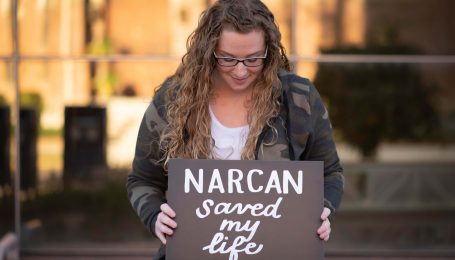Medication-assisted treatment (MAT), involves the use of certain FDA-approved medications to treat people with substance use disorders. The meds generally aren’t used on their own, but in conjunction with counseling and other traditional forms of addiction treatment.
Studies indicate that medication-assisted treatment is a safe and effective treatment for drug addiction and alcoholism, and may increase the chance of long-term recovery.
How Medications Help with Addiction
Thanks to scores of research studies conducted over the last few decades, we know that addiction is a chronic disease that makes very real changes in the brain. Like any chronic disease, addiction is treatable.
Similarly, we no longer believe that addicted people deserve a difficult withdrawal from drugs and alcohol, or that the miserable symptoms such as chills, sweating, cramps, nausea, vomiting, diarrhea, headaches, and anxiety are a necessary part of recovery. In fact, withdrawal makes getting clean more difficult.
SAMHSA (the Substance Abuse and Mental Health Services Administration), explains that medication-assisted therapy helps “normalize brain chemistry, block the euphoric effects of alcohol and opioids, relieve cravings, and normalize bodily functions without the negative effects of the abused drug.”
In simple terms, medications replace dangerous drugs with safer alternatives. By stopping cravings, MAT buys time for addicted people to concentrate on therapy and other treatments. Once drugs or alcohol clears the body, people can think more clearly and benefit from treatment.
People benefit from medication-assisted therapy in several ways. Most importantly, they are less likely to die from a fatal overdose, to be injured by violence or accidents, or to be involved in criminal activities. There is also evidence that MAT may decrease the risk of developing HIV and Hepatitis C.
In short, the overall quality of life is improved. People who stay in treatment longer have a better chance of long-term recovery and a reduced risk of relapse.
Commonly Used Medications
Several different medications are used to treat alcoholism and addiction to heroin and other opioid drugs. So far, no medications have been developed to treat addiction to cocaine, meth or marijuana, although medications may be prescribed to ease the symptoms of withdrawal.
The most commonly prescribed drugs for the treatment of addiction include the following:
Alcoholism
- Disulfiram (Antabuse) is prescribed for people who have completed detox and have been free of alcohol for at least 12 hours. It is taken in pill form once every day. Disulfiram shouldn’t be used if a person is intoxicated, as even a very small amount of alcohol combined with disulfiram may result in headache, nausea, vomiting, difficulty breathing, and chest pains.
- Naltrexone (Vivitrol, Revia), approved by the FDA for treatment of alcoholism in 2006, helps by reducing the urge to drink. A person who drinks alcohol while taking naltrexone won’t become sick, but they won’t experience the usual “high” or feeling of relaxation generally provided by alcohol.
- Acamprosate (Campral), approved in 2004, is generally prescribed after five days of total abstinence. The medication is usually taken in pill form three times per day. It doesn’t prevent most withdrawal symptoms, and it doesn’t help people who continue to drink. It is useful for people who have managed to stop drinking but continue to struggle with cravings.
Opioids
- Methadone is a well-known drug used as a treatment of opioid addiction for decades. It works by blocking the “high” produced by heroin and other opioid drugs, and also minimizes painful withdrawal symptoms. If used properly, it reduces cravings and helps people return to more normal lives. Methadone is tightly regulated and administered by specialized clinics.
- Buprenorphine, approved for opioid addiction in 2002, is a weak type of opioid drug. It is intended to help people gradually get off drugs such as heroin and oxycodone by minimizing cravings and withdrawal symptoms. It is available in various forms, often in combination with Naloxone, and marketed by brand names such as Suboxone, Subutex, Butrans, and several others. Buprenorphine can be prescribed in a doctor’s office.
- Naltrexone (Vivitrol) doesn’t decrease withdrawal symptoms but works by blocking the “high” produced by heroin and other opioid drugs. Naltrexone is prescribed after a person has stopped using opioid drugs for at least a week to ten days. Severe withdrawal symptoms may result if naltrexone is used while opioids are still in the system.
The Controversy: Replacing one Addiction with Another?
Although medication-assisted therapy is supported by the medical community, some people argue that medication only swaps one substance for another. Many claim that total abstinence is the only way to full recovery.
It’s true that the medications are powerful, and some, such as methadone and buprenorphine, are in the same drug family as heroin and morphine. It’s also true that some may present a risk of addiction. Some people continue to use the medication for months or even years.
On the other hand, proponents view medication-assisted treatment as a type of harm reduction. Abstinence is always the ultimate goal, but some people may never be completely drug-free.
When appropriately used, medication allows these people to reach the highest possible level of functioning, and to lead relatively normal lives with a reduced risk of dangerous results, including fatal overdose.
Is Medication-Assisted Treatment Right for You?
If you’re struggling with addiction to alcohol or opioid drugs, consider checking into a drug and alcohol treatment or rehab that specializes in medication-assisted treatment.
You can also talk to your doctor about MAT. If she isn’t willing to consider the idea, you may need to speak to another medical provider. Each of the medications mentioned above presents both benefits and risks. It’s critical that your medical provider understands how each drug works and how it can benefit you.
Medication-assisted treatment isn’t a magic cure or a quick fix. Getting off drugs and alcohol is a slow process that requires commitment and a lot of hard work. However, when used with standard treatment, MAT may significantly improve your quality of life and increase your chances of long-term success.



